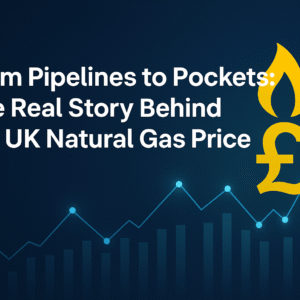The Federal Reserve interest rates play a pivotal role in shaping the financial landscape of the United States. In 2025, their influence stretches across personal finance, corporate investments, housing markets, and national economic policies. As inflation pressures persist and recession fears loom, the Fed’s decisions carry heightened significance. Every rate hike or pause affects borrowing costs, saving yields, and consumer behavior. Understanding these shifts is crucial for anyone looking to navigate the economy wisely. This article dives into how the Fed’s interest rate strategies are impacting Americans and what lies ahead.
Why Do the Federal Reserve Interest Rates Matter So Much?
The economic heartbeat of the United States often rests on one critical lever: the Federal Reserve interest rates. These rates affect everything from your mortgage payments to corporate investments and government debt. When the Fed adjusts them, it sends ripples throughout global markets. As 2025 unfolds, understanding the trajectory, impact, and implications of these rates is more essential than ever.
In this article, we’ll break down the purpose of the Federal Reserve’s rate decisions, their influence on inflation, employment, housing, and small business, and what both investors and average citizens should expect in the coming months.
What Factors Drive the Federal Reserve’s Decision on Interest Rates?
The Federal Reserve doesn’t randomly change rates. Each decision is data-driven and reflects its dual mandate: maintaining price stability and achieving maximum employment. The key factors considered include:
- Inflation: If prices rise too quickly, the Fed may hike rates to slow spending.
- Unemployment: If too many people are out of work, the Fed may cut rates to stimulate the economy.
- GDP Growth: The broader pace of the economy helps determine if cooling or heating is needed.
- Global Events: Wars, pandemics, or foreign banking instability can push the Fed to act.
In 2025, inflation remains stubborn in certain sectors despite aggressive rate hikes in 2022 and 2023. Meanwhile, employment remains relatively strong, making rate decisions more complex than ever.
How Have Interest Rate Changes Impacted Borrowers and Lenders?
When the Federal Reserve interest rates rise, it becomes more expensive to borrow money. This affects:
- Consumers: Credit card rates, auto loans, and mortgage interest rates all increase, making it harder to finance purchases.
- Businesses: Companies are less likely to take out loans for expansion, leading to slower growth and fewer jobs.
- Banks: Lenders benefit from higher rates because they can charge more on loans, though demand for those loans may drop.
Conversely, savers often enjoy higher yields on savings accounts and certificates of deposit, improving personal finance for those not reliant on credit.
In early 2025, many Americans are still adjusting to higher mortgage rates, which have cooled the housing market and lowered home affordability, particularly for first-time buyers.
What Is the Fed’s Current Strategy Going Forward?
The Fed’s recent tone has been one of caution. After aggressively increasing rates to combat inflation from pandemic-era stimulus and supply shocks, the central bank has signaled a potential pause—or even slight cuts—should inflation continue its gradual decline.
However, the outlook remains uncertain. Global tensions, supply chain bottlenecks, and rising commodity prices all keep inflation risks alive. The Fed is now walking a tightrope: keeping inflation under control without triggering a recession.
As of Q2 2025, the Federal Reserve interest rates sit between 5.00% and 5.25%, with markets eagerly watching every Fed meeting and Chairman’s statement for clues on the next move.
How Do These Interest Rates Influence the Stock Market and Investments?
When interest rates climb, borrowing becomes costlier, reducing consumer spending and corporate profits, two key drivers of stock performance. Consequently, high rates often lead to market volatility or even downturns.
On the flip side, certain sectors—such as financials—may benefit. Banks, for example, earn more on loans when interest rates are high.
Moreover, high rates make fixed-income assets like bonds more attractive, drawing investment away from equities. In 2025, many cautious investors are diversifying their portfolios to include high-yield bonds and money market accounts as a hedge against further market turbulence.
What Are the Effects on Real Estate and Housing Markets?
The housing market is perhaps the most directly affected by the Federal Reserve’s interest rates. Higher rates mean higher monthly mortgage payments. As a result:
- Demand Drops: Fewer people can afford new homes, especially in expensive metro areas.
- Prices Stabilize or Fall: Reduced demand can soften or even reverse price growth.
- Construction Slows: Builders are more hesitant to start new projects amid rising costs and falling demand.
In 2025, this has led to a shift. While home prices haven’t plummeted, the rapid appreciation seen in 2021–2022 has cooled significantly. Many would-be buyers are now renting or delaying their purchases.
How Are Small Businesses Coping with the Changing Rates?
Small businesses often rely on loans to expand, purchase equipment, or manage cash flow. High Federal Reserve interest rates make these loans more expensive and harder to justify.
This creates a domino effect:
- Growth plans are put on hold.
- Hiring slows.
- Some businesses may even shut down due to rising operating costs.
Additionally, consumers spending less—due to high credit card debt or limited disposable income—hurts local businesses further.
Many small business owners are advocating for rate cuts in late 2025, hoping for a return to more accessible financing and economic breathing room.
Is There a Political Angle to the Fed’s Interest Rate Policy?
Though the Federal Reserve operates independently of the executive branch, interest rate decisions can have massive political consequences. In a presidential election year like 2024 and its aftermath in 2025, both parties keep a close eye on how rate policy affects voters’ wallets.
Rising rates often lead to criticism from elected officials concerned about housing affordability, student loans, and job growth. Meanwhile, lowering rates too soon risks reigniting inflation—another political liability.
In recent months, some lawmakers have pushed for Congressional oversight of the Fed’s decision-making, especially as the nation weighs the trade-offs between economic cooling and recession risks.
What Should Consumers and Investors Do Amid This Uncertainty?
Given the volatility in interest rates and the broader economy, consumers and investors need to act wisely. Here are some tips:
- Avoid variable-rate loans: Lock in fixed rates while they’re still relatively stable.
- Build an emergency fund: Rising costs and possible layoffs make savings critical.
- Diversify investments: Include both growth and income-generating assets in your portfolio.
- Monitor inflation reports and Fed statements: These will offer clues about where the economy—and your money—are heading.
Education and awareness are key. Understanding how Federal Reserve interest rates influence everything from groceries to gas to 401(k)s empowers individuals to make informed financial decisions.
Conclusion: Where Are We Headed Next?
The Federal Reserve interest rates remain one of the most powerful tools in shaping the U.S. economy. While 2025 has brought signs of both resilience and risk, the path forward is uncertain. The Fed must balance curbing inflation with sustaining growth, without overcorrecting in either direction.
For the average American, the stakes couldn’t be higher. Mortgage rates, job opportunities, business plans, and savings all hang in the balance. As we move through the year, the Fed’s decisions will continue to dominate headlines and pocketbooks alike.








